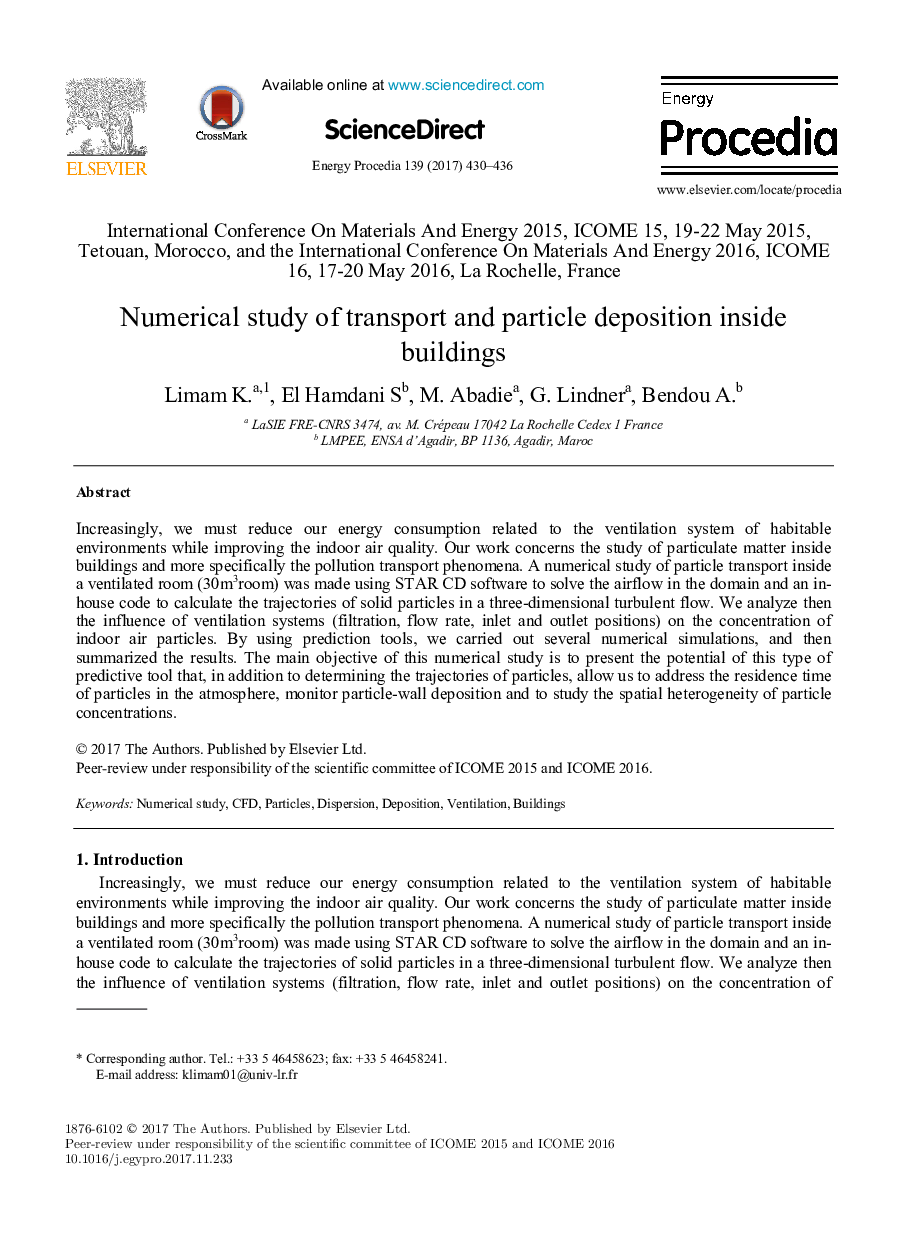| Article ID | Journal | Published Year | Pages | File Type |
|---|---|---|---|---|
| 7917963 | Energy Procedia | 2017 | 7 Pages |
Abstract
Increasingly, we must reduce our energy consumption related to the ventilation system of habitable environments while improving the indoor air quality. Our work concerns the study of particulate matter inside buildings and more specifically the pollution transport phenomena. A numerical study of particle transport inside a ventilated room (30m3room) was made using STAR CD software to solve the airflow in the domain and an in-house code to calculate the trajectories of solid particles in a three-dimensional turbulent flow. We analyze then the influence of ventilation systems (filtration, flow rate, inlet and outlet positions) on the concentration of indoor air particles. By using prediction tools, we carried out several numerical simulations, and then summarized the results. The main objective of this numerical study is to present the potential of this type of predictive tool that, in addition to determining the trajectories of particles, allow us to address the residence time of particles in the atmosphere, monitor particle-wall deposition and to study the spatial heterogeneity of particle concentrations.
Related Topics
Physical Sciences and Engineering
Energy
Energy (General)
Authors
K. Limam, S. El Hamdani, M. Abadie, G. Lindner, A. Bendou,
